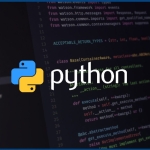実践データ分析100本ノック(第4章-顧客の行動を予測する-31~34)

参考:
・fit, transform, fit_transformについて
fit、transform、fit_transformの意味を、正規化の例で解説
・標準化について
統計で頻出する標準化とは?【意味や使用場面について詳しく解説!】
・scikit-learnの使い方について
scikit-learnの4つの関数で機械学習などのデータを前処理する
・scikit-learn引数について
データ分析がしたい
・sckikt-learn主成分分析について
Pythonで主成分分析(PCA)を行う方法を現役エンジニアが解説【初心者向け】
cscikit-learnインストール
機械学習用のライブラリscikit-learnをインストールします。
pip3 install scikit-learn
コード
# %%
import pandas as pd
#--ノック31------------------------------
# %%
# CSV読み込み
uselog = pd.read_csv('./samples/3/use_log.csv')
# 欠損値確認
uselog.isnull().sum()
# log_id 0
# customer_id 0
# usedate 0
# dtype: int64
# %%
# CSV読み込み
customer = pd.read_csv('./samples/3/customer_join.csv')
# 欠損値確認
customer.isnull().sum()
# customer_id 0
# name 0
# class 0
# gender 0
# start_date 0
# end_date 2842
# campaign_id 0
# is_deleted 0
# class_name 0
# price 0
# campaign_name 0
# mean 0
# median 0
# max 0
# min 0
# routine_flg 0
# calc_date 0
# membership_period 0
# dtype: int64
#--ノック32------------------------------
# %%
customer_clustering = customer[["mean", "median", "max", "min", "membership_period"]]
print(customer_clustering.head())
# mean median max min membership_period
# 0 4.833333 5.0 8 2 47
# 1 5.083333 5.0 7 3 47
# 2 4.583333 5.0 6 3 47
# 3 4.833333 4.5 7 2 47
# 4 3.916667 4.0 6 1 47
# %%
# インポート
from sklearn.cluster import KMeans
from sklearn.preprocessing import StandardScaler
# 標準化
sc = StandardScaler()
customer_clustering_sc = sc.fit_transform(customer_clustering)
# モデル構築
# 4つのクラスに分ける, 乱数指定
kmeans = KMeans(n_clusters=4, random_state=0)
# 実行
clusters = kmeans.fit(customer_clustering_sc)
# 代入
customer_clustering["cluster"] = clusters.labels_
print(customer_clustering["cluster"].unique())
customer_clustering.head()
#--ノック33------------------------------
# %%
# カラム名を変更
customer_clustering.columns = ["月内平均値", "月内中央値", "月内最大値", "月内最小値", "会員期間", "cluster"]
# グループごとの件数を確認
customer_clustering.groupby("cluster").count()
# 月内平均値 月内中央値 月内最大値 月内最小値 会員期間
# cluster
# 0 761 761 761 761 761
# 1 846 846 846 846 846
# 2 1249 1249 1249 1249 1249
# 3 1336 1336 1336 1336 1336
# グループごとの平均を確認
customer_clustering.groupby("cluster").mean()
# 月内平均値 月内中央値 月内最大値 月内最小値 会員期間
# cluster
# 0 3.051243 2.885677 4.750329 1.653088 9.269382
# 1 8.054608 8.039598 10.009456 6.160757 7.072104
# 2 4.677494 4.671337 7.232986 2.153723 36.915933
# 3 5.522518 5.373129 8.743263 2.686377 14.831587
#--ノック34------------------------------
# 次元削除を行う(5つの変数で表現していたものを2次元で行う)
# %%
# 主成分分析ライブラリをインポート
from sklearn.decomposition import PCA
# データを定義
X = customer_clustering_sc
# 次元数を指定
pca = PCA(n_components=2)
# 主成分分析の実施
pca.fit(X)
# 主成分分析の結果を説明変数に適用
x_pca = pca.transform(X)
# データフレーム化
pca_df = pd.DataFrame(x_pca)
pca_df["cluster"] = customer_clustering["cluster"]
# 描画
import matplotlib.pyplot as plt
%matplotlib inline
for i in customer_clustering["cluster"].unique():
tmp = pca_df.loc[pca_df["cluster"]==i]
plt.scatter(tmp[0], tmp[1])
参考動画
【主成分分析】
【k-means】



ディスカッション
コメント一覧
まだ、コメントがありません